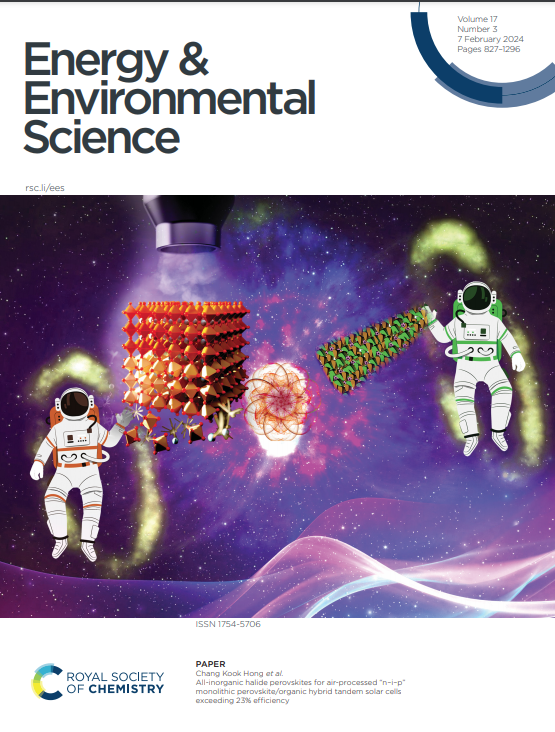Innovative electrode designs for low-temperature electrochemical CO2 reduction with ampere-level performance
IF 32.4
1区 材料科学
Q1 CHEMISTRY, MULTIDISCIPLINARY
引用次数: 0
Abstract
The electrochemical carbon dioxide reduction reaction (eCO2RR) is a key technology for converting intermittent renewable energy into value-added fuels and chemicals, offering a promising pathway to re-balance the carbon cycle. However, its selectivity, stability, and energy efficiency remain insufficient to meet industrial requirements, particularly at high current densities. To advance this technology toward large-scale implementation at the industrial level, research has shifted from focusing solely on electrocatalyst optimization to a more holistic approach that integrates electrode design with reactor and system engineering. As a critical component of CO2 electrolysis systems, the electrode plays a pivotal role in mass transfer kinetics and interfacial reactions. This review provides an in-depth analysis of advanced electrode design strategies and fabrication technologies while assessing their commercialization prospects. We first outline the fundamental working principles and reaction mechanisms of cathode electrodes, establishing a foundation for next-generation electrode development. We then present a comprehensive review of recent progress in electrode structure design, covering conventional non-gas diffusion electrodes (GDEs), planar GDEs, and microtubular GDEs, with a focus on their efficiency in converting CO2 into value-added products. Additionally, we explore CO2 mass transfer mechanisms and enhancement strategies across different electrode configurations to mitigate mass transfer limitations and optimize performance. Finally, we discuss the remaining challenges and future opportunities in this field, offering insights into the design of electrodes for ampere-level and industrial-scale applications. This review aims to accelerate the commercial deployment of eCO2RR technology by providing valuable guidance for the development of high-performance electrodes.具有安培级性能的低温电化学CO2还原创新电极设计
电化学二氧化碳还原反应(eCO2RR)是将间歇性可再生能源转化为增值燃料和化学品的关键技术,为重新平衡碳循环提供了一条有前途的途径。然而,它的选择性、稳定性和能量效率仍然不足以满足工业要求,特别是在高电流密度下。为了推动这项技术在工业水平上的大规模实施,研究已经从仅仅关注电催化剂优化转向了一种更全面的方法,将电极设计与反应器和系统工程相结合。作为CO2电解系统的重要组成部分,电极在传质动力学和界面反应中起着关键作用。这篇综述深入分析了先进的电极设计策略和制造技术,同时评估了它们的商业化前景。我们首先概述了阴极电极的基本工作原理和反应机理,为下一代电极的开发奠定了基础。然后,我们全面回顾了电极结构设计的最新进展,包括传统的非气体扩散电极(GDEs),平面GDEs和微管GDEs,重点介绍了它们将二氧化碳转化为增值产品的效率。此外,我们还探索了不同电极配置的CO2传质机制和增强策略,以减轻传质限制并优化性能。最后,我们讨论了该领域存在的挑战和未来的机遇,为安培级和工业规模应用的电极设计提供了见解。本综述旨在通过为高性能电极的开发提供有价值的指导,加速eCO2RR技术的商业部署。
本文章由计算机程序翻译,如有差异,请以英文原文为准。
求助全文
约1分钟内获得全文
求助全文
来源期刊

Energy & Environmental Science
化学-工程:化工
CiteScore
50.50
自引率
2.20%
发文量
349
审稿时长
2.2 months
期刊介绍:
Energy & Environmental Science, a peer-reviewed scientific journal, publishes original research and review articles covering interdisciplinary topics in the (bio)chemical and (bio)physical sciences, as well as chemical engineering disciplines. Published monthly by the Royal Society of Chemistry (RSC), a not-for-profit publisher, Energy & Environmental Science is recognized as a leading journal. It boasts an impressive impact factor of 8.500 as of 2009, ranking 8th among 140 journals in the category "Chemistry, Multidisciplinary," second among 71 journals in "Energy & Fuels," second among 128 journals in "Engineering, Chemical," and first among 181 scientific journals in "Environmental Sciences."
Energy & Environmental Science publishes various types of articles, including Research Papers (original scientific work), Review Articles, Perspectives, and Minireviews (feature review-type articles of broad interest), Communications (original scientific work of an urgent nature), Opinions (personal, often speculative viewpoints or hypotheses on current topics), and Analysis Articles (in-depth examination of energy-related issues).
 求助内容:
求助内容: 应助结果提醒方式:
应助结果提醒方式:


